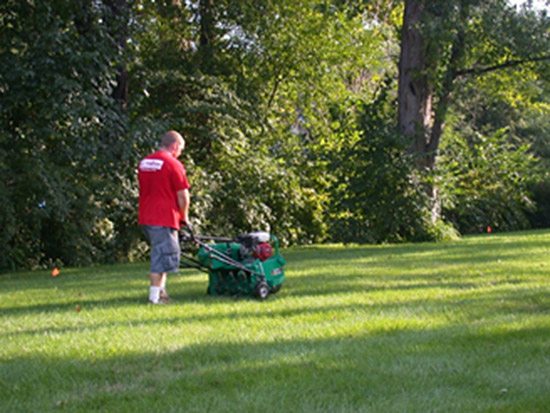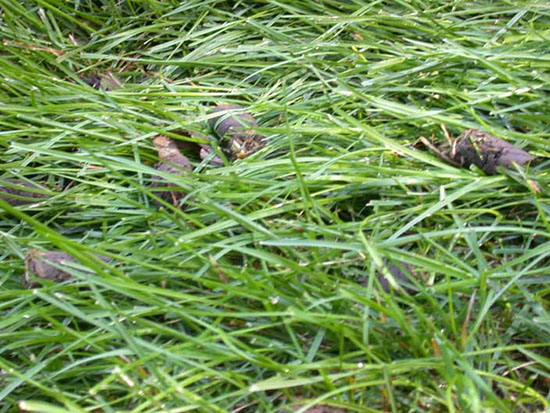Issue 16, September 20, 2016
Aeration of Turf
September and early October is an ideal time to rejuvenate lawns, whether you want to work on a small area or a large acreage. As cool weather starts to become more common, the cool-season bluegrasses, ryegrasses and fescues will recover and start to fill in.
Aeration is one of the best things to do if the soil is hard and compacted such as a suburban clay soil, or filled with lots of cracks due to the heat. Under those conditions, grass roots won't grow quickly. Turf just kinds of sits there and doesn't do much even with fertilizing.
Aerating pokes penny to nickel-size holes in the lawn usually two to four inches apart. The best aerators pull a plug of soil out, and deposit it on the turf's surface. Negatively, it gives the illusion of geese or small dogs visiting your yards.

Aerating turf.
Most of the plugs are typically about 2 to 4 inches in length. However, when mowed the following day or two, they will be pulverized and filter down between the grass blades to the soil below. Think of the plug and lawn mower as a carrot in a food processor, but not as hard.

Aeration plugs.
The advantage of plug or core aeration is that it creates a hole in the soil. The soil surrounding the hole soon collapses with watering and fertilizing, or is filled by the pulverized plug. A looser soil means better root growth. Better root growth means better top growth, which means better root growth. It's a perpetual circle.
Over the years, we've come to believe that yearly aerating can be one of the best things you can do to a lawn, particularly where there is clay soil, clay with sod, kids, pets, or any combination of the four. If the lawn is adequately growing, aerating every three to four years may be enough. Watch out for buried sprinkler heads and tree roots which can be damaged by the tines and vice-versa.
Aerating should occur when the turf starts to recover, which is in September. Unlike seeding, we have a relatively wide window of opportunity, starting now and going until mid-October.
There are machines that just punch holes in the turf; while a hole is created, the surrounding soil has been compressed by the machine. Aerating spikes attached to shoes and boots are more "feel good" for the person than providing any benefit to the turf. Removing the plug is really the best course of action.
Fertilizing should occur after aerating to make sure the grass is stimulated to grow. (David Robson)
Author:
David Robson